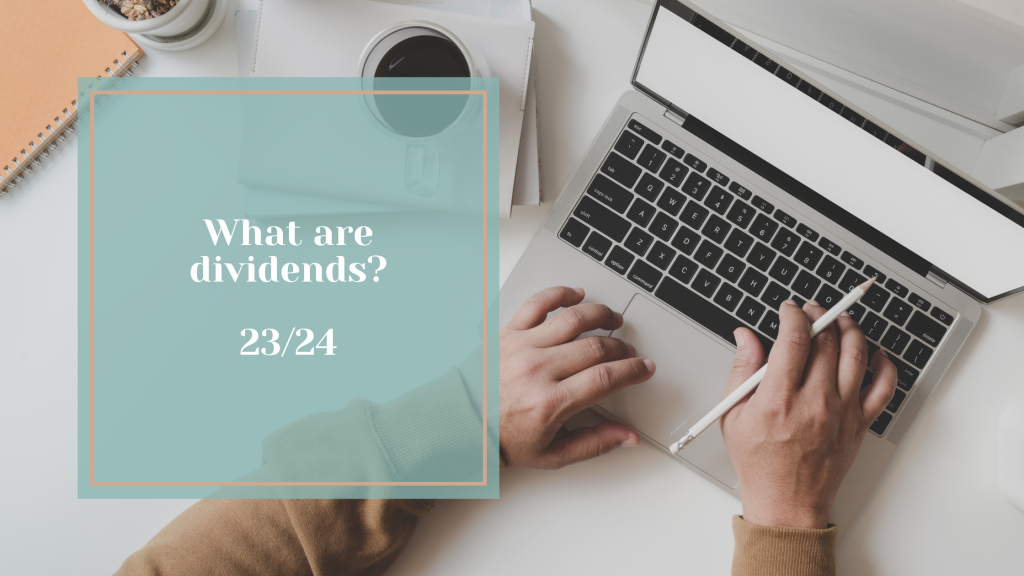I have had several questions lately from business owners trying to understand dividends.
So here we explore the basics, what you need to know and how to make the most of your hard-earned profits.
A dividend is a distribution of a company’s profits to its shareholders.
This is another way of taking money out of a company instead of a salary.
If can often be tax efficient in you are a director and shareholder of your own company to take a low salary and the remaining in dividends. This will depend on what other incomes you receive personally.
Also, dividends can only be paid if a limited company has the reserves to do so. The reserves are what’s left in a company from the available profits after paying expenses, tax, VAT, and other liabilities.
Taking more out of your company than you are allowed to may result in you paying excess tax so it is always worth discussing your profit extraction strategy with your accountant.
Dividends are different from salary and they are not a business cost so they wont reduce your profits or corporation tax.
In the tax year 2023/24;
The tax-free dividend allowance is £1,000.
This means that you can receive £1,000 in dividends regardless of any other income you earn, this will drop to £500 from 24/25.
If you earn more than £1,000 in dividends then the tax rate will depend on the levels of other income you earn.
Personal allowance | Up to £12,570 | 0% |
Basic Rate | £12,571 – £37,700 | 8.75% |
Higher Rate | £37,701 – £125,140 | 33.75% |
Additional Rate | £125,141 + | 39.35% |
Dividends are taxed on the date that they are declared payable. It is important that you document and create dividend vouchers to support the dividends declared.
Dividends need to be declared on the shareholder’s personal self-assessment tax return.
Get ahead, get it done.
Get in touch if you would like support with completing your tax return.
Ask me for my FREE 22/23 Tax Return Checklist
Thank you for reading this weeks blog – Dividends for business owners in the tax year 2023/24.
Flo
